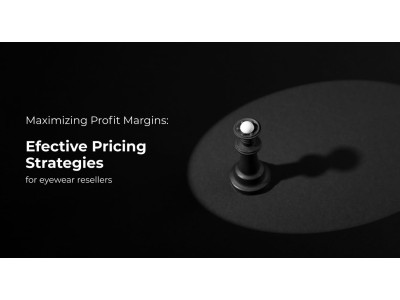Sustainability has become a significant driving force in consumer behavior, influencing buying decisions across a wide range of industries. The eyewear industry is no exception, with more customers seeking eco-friendly alternatives to traditional frames. As we move into 2024, catering to environmentally conscious consumers is not just a nice-to-have — it’s essential for any optical store looking to stay relevant and competitive.
In this blog, we’ll explore the growing trend of sustainable eyewear, the materials and practices leading the charge, and how optical stores can effectively appeal to eco-conscious customers by embracing sustainability.
Understanding the Demand for Sustainable Eyewear
Today’s consumers are more aware than ever of their environmental footprint. From fashion to food, eco-conscious choices have become mainstream, and eyewear is no different. People want to know that their purchases align with their values, which include reducing waste, using renewable materials, and supporting ethical practices.
What’s Driving This Trend?
• Environmental concerns: With increasing awareness about climate change and plastic pollution, many customers are seeking ways to minimize their environmental impact.
• Ethical shopping: Consumers are more likely to choose brands that prioritize transparency, fair labor practices, and sustainability.
• Health-conscious living: Eco-friendly materials are often safer for wearers, as they tend to be free of harmful chemicals like BPA and other plastics.
Why It Matters: By offering sustainable eyewear options, optical stores can tap into a growing market of eco-conscious consumers who are willing to pay a premium for products that align with their values.
Sustainable Materials: The Foundation of Eco-Friendly Eyewear
One of the primary ways the eyewear industry is moving toward sustainability is by using eco-friendly materials in frame production. These materials not only reduce environmental harm but also offer unique textures and styles that appeal to modern consumers.
Top Sustainable Materials to Consider:
• Recycled plastic and acetate: Many brands are now creating frames from recycled ocean plastic or discarded acetate scraps, reducing waste and giving new life to materials that would otherwise end up in landfills.
• Bio-based acetate: Made from renewable resources like cotton and wood pulp, bio-acetate is biodegradable and free from harmful chemicals, making it an excellent alternative to petroleum-based plastics.
• Bamboo and wood: Lightweight, renewable, and biodegradable, bamboo and wood frames offer a natural, earthy aesthetic that appeals to eco-conscious shoppers.
• Recycled metals: Stainless steel and aluminum can be recycled multiple times, and they’re durable, corrosion-resistant, and ideal for high-end, sustainable frame designs.
Why It Matters: Using sustainable materials is the foundation of eco-friendly eyewear. Customers who prioritize sustainability will appreciate knowing that the frames they’re wearing are made from renewable, recycled, or biodegradable resources, contributing to a more eco-conscious lifestyle.
Ethical Manufacturing Practices: Going Beyond Materials
While sustainable materials are important, consumers are increasingly interested in how and where their products are made. Ethical manufacturing practices, fair labor conditions, and responsible supply chains are key factors that eco-conscious consumers consider when choosing eyewear.
Best Practices for Ethical Manufacturing:
• Fair labor practices: Ensure that your suppliers provide fair wages and safe working conditions for their employees, supporting ethical labor standards.
• Local production: Sourcing frames from local manufacturers or those with lower carbon footprints can appeal to customers concerned about the environmental impact of long supply chains.
• Waste reduction: Encourage your suppliers to minimize waste during production, whether by reusing scraps or opting for energy-efficient machinery.
Why It Matters: Customers who care about sustainability are often just as concerned with ethical practices. Being transparent about your supply chain and manufacturing practices can help build trust and loyalty with eco-conscious consumers, making your brand stand out in a crowded market.

Marketing Eco-Friendly Eyewear: Highlighting Sustainability
To appeal to eco-conscious customers, it’s crucial to communicate your sustainability efforts effectively. Your marketing should emphasize the environmental benefits of your products, from the materials used to the production processes behind them.
Key Marketing Strategies:
• Storytelling: Share the story behind your sustainable products. Highlight the journey from recycled or renewable materials to finished frames and explain how each purchase helps reduce environmental impact.
• Certifications and partnerships: If your products are certified by recognized eco-labels (e.g., FSC, GOTS, or Fair Trade), make sure to highlight these in your marketing. Partnering with environmental organizations can also strengthen your brand’s commitment to sustainability.
• Visual content: Use professional photos or videos to showcase your sustainable eyewear. Focus on the natural textures and materials, and include eco-friendly packaging in your displays.
• Transparent messaging: Customers appreciate honesty. Be transparent about your sustainability practices, including what steps you’ve taken and what areas you’re still working to improve.
Why It Matters: Eco-conscious consumers are often well-informed and skeptical of greenwashing (false claims about sustainability). By providing clear, transparent information about your sustainability practices, you build trust and credibility with this audience, which in turn can lead to increased sales.
In-Store Initiatives: Creating a Sustainable Shopping Experience
For optical stores with physical locations, creating an eco-friendly shopping experience can further resonate with customers who prioritize sustainability. Simple adjustments in-store can make a big difference in how your brand is perceived.
Eco-Friendly In-Store Ideas:
• Recycling programs: Offer an eyewear recycling program where customers can bring in old frames to be recycled or repurposed. This can reduce waste and encourage repeat business.
• Sustainable packaging: Use eco-friendly, recyclable, or biodegradable packaging for both in-store purchases and online orders. Avoid excessive plastic and opt for materials like recycled cardboard or compostable bags.
• Energy-efficient lighting: Install energy-saving LED lights in your store to reduce electricity consumption and create a more sustainable retail environment.
• Eco-friendly displays: Use reclaimed wood, recycled metals, or other sustainable materials to create eco-friendly displays that align with your commitment to the environment.
Why It Matters: Customers who care about sustainability are likely to appreciate an eco-conscious shopping environment. Offering recycling programs, using sustainable packaging, and creating an energy-efficient store can enhance the customer experience and set you apart from less environmentally friendly competitors.

Pricing Sustainable Eyewear: How to Position Your Eco-Friendly Collection
Pricing is always a consideration when offering premium products, and sustainable eyewear often comes at a higher price point due to the cost of eco-friendly materials and ethical manufacturing. However, many eco-conscious consumers are willing to pay a premium for products that align with their values.
Pricing Strategies:
• Highlight long-term value: Emphasize the durability and quality of sustainable materials. High-end materials like bio-acetate and recycled metals tend to last longer, offering more value over time.
• Offer tiered options: Provide a range of sustainable eyewear options at different price points. This can attract customers who are interested in sustainability but may not be ready to invest in luxury eyewear.
• Bundle sustainability features: Consider offering additional sustainable features, such as eco-friendly lenses or biodegradable cases, to further justify the higher price point.
Why It Matters: Eco-conscious consumers are generally more willing to invest in premium products if they feel that the higher price is justified by ethical production, quality materials, and environmental benefits. Clear communication about these factors can help customers understand the value of your sustainable eyewear collection.
Engaging with the Eco-Conscious Community: Building a Loyal Customer Base
Sustainability is not just a trend; it’s a lifestyle. To truly connect with eco-conscious consumers, optical stores should focus on building a community around their brand, engaging with like-minded individuals, and supporting broader environmental efforts.
Ways to Engage with the Eco-Conscious Community:
• Host sustainability workshops or events: Organize in-store or online events focused on sustainable living or eco-friendly fashion. This could include workshops on how to care for eco-friendly eyewear or discussions on broader environmental topics.
• Collaborate with eco-influencers: Partner with influencers who are passionate about sustainability. They can help promote your products to a wider audience and build credibility around your eco-friendly efforts.
• Support environmental causes: Pledge a portion of your sales to environmental organizations or initiatives, such as reforestation projects or ocean cleanup efforts. This not only enhances your brand’s reputation but also resonates with customers who want to make a positive impact through their purchases.
Why It Matters: Engaging with the eco-conscious community helps foster loyalty and creates a deeper connection between your brand and your customers. When people feel that your brand aligns with their values, they’re more likely to become repeat customers and advocates for your business.
Conclusion
Sustainability in eyewear is more than just a passing trend — it’s a growing movement that optical stores need to embrace to remain relevant in 2024 and beyond. By offering eco-friendly products, adopting sustainable practices, and effectively communicating your commitment to the environment, you can appeal to the rapidly growing market of eco-conscious consumers.
Whether through sustainable materials, ethical manufacturing, or in-store recycling programs, every step you take toward sustainability can help you build a loyal customer base, increase sales, and position your store as a leader in the eco-friendly eyewear market.


